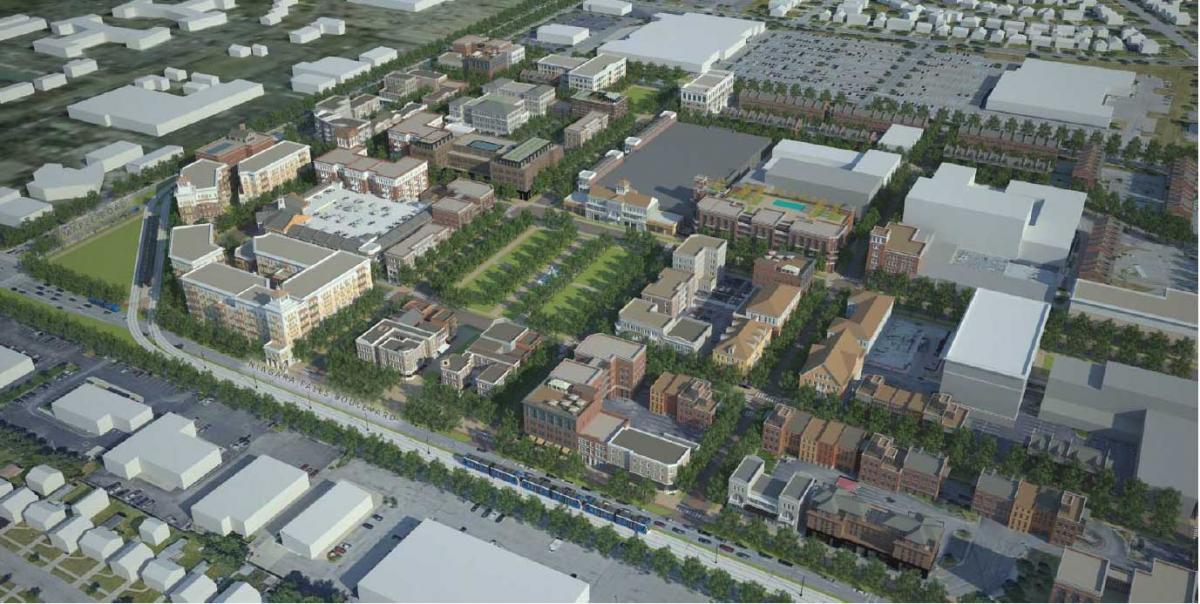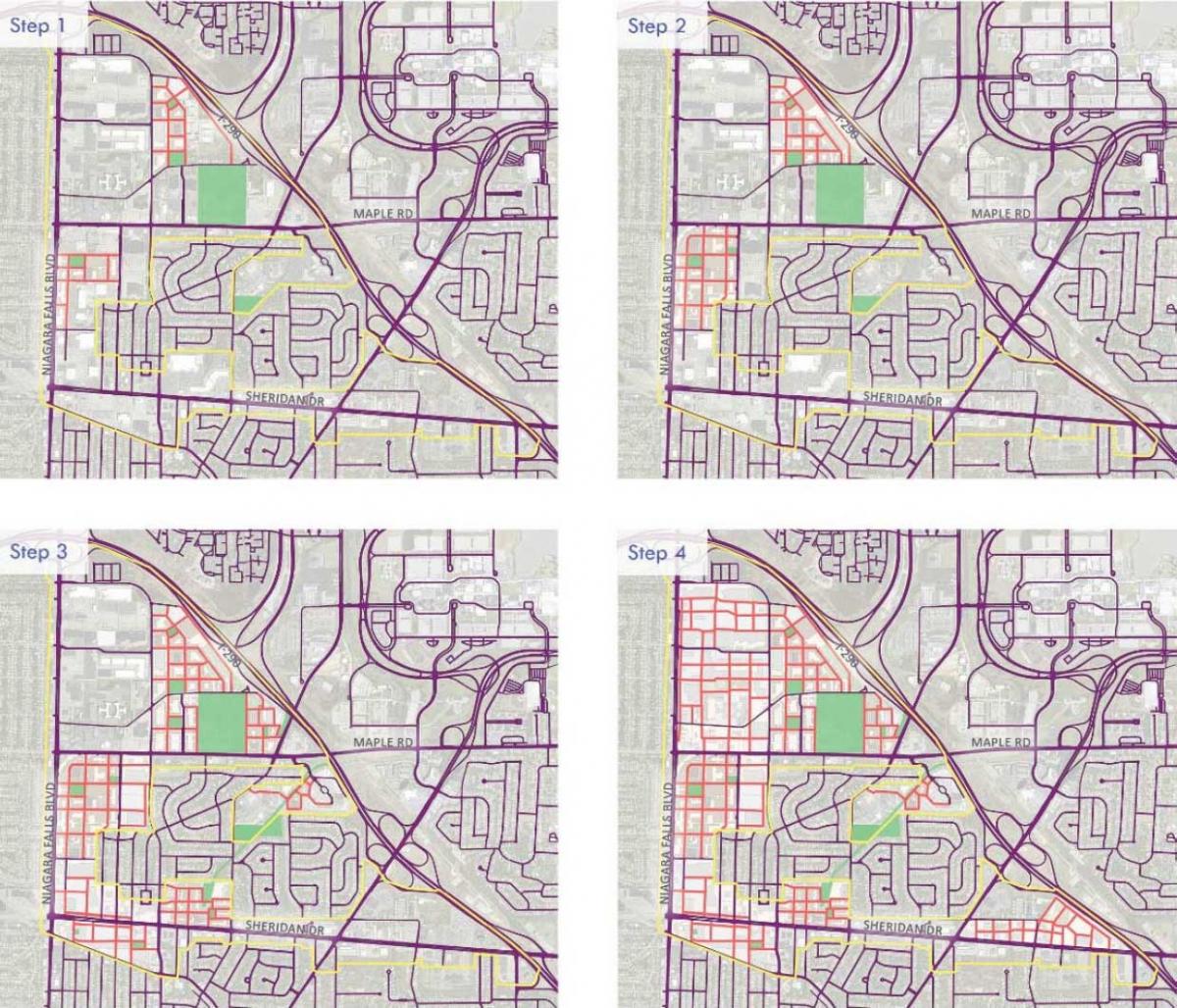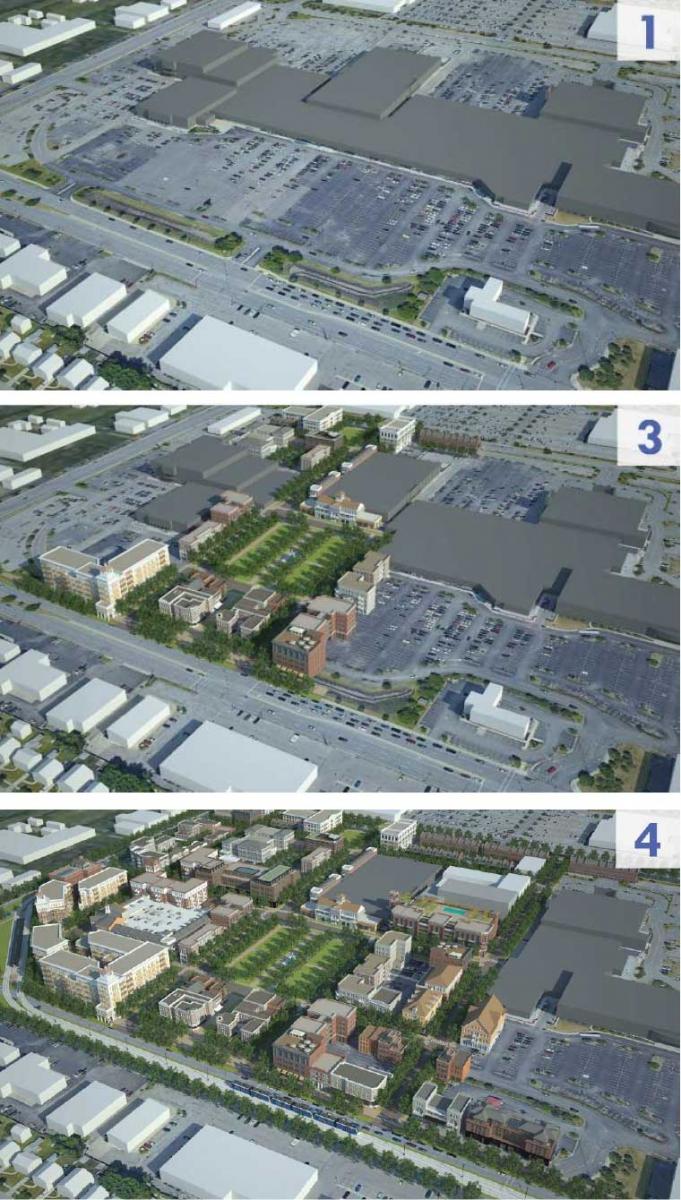
Urban renewal could turn a dead mall into a downtown
Converting a growing number of dead malls to mixed-use centers is challenging, especially in slow-moving real estate markets like the Buffalo region. Yet the Boulevard Mall in Amherst, New York, is poised to begin the transformation, due to funding and policy decisions at the local and state level.
New York Gov. Kathy Hochul recently awarded $31 million to prepare infrastructure to transform the largely vacant site in a suburb connected to two University of Buffalo campuses. The project requires upgrades to wastewater treatment and stormwater improvements for adjacent Williamsville, Snyder, and Eggertsville neighborhoods, explains Town of Amherst supervisor Brian Kulpa. “The Town’s West Amherst Infrastructure Project would have been too large for us to complete alone,” he notes.
The town, with a population of 129,000, is the fourth-largest municipality in Upstate, New York, behind Buffalo, Rochester, and Syracuse. Amherst has designated the mall an “urban renewal area,” bringing the tools to bear to overcome thorny redevelopment issues. “If communities could use urban renewal to destroy neighborhoods and create malls, let’s use this to tear down a dead mall and create a neighborhood,” Kulpa argues. The urban renewal area, including the mall and surrounding parcels, totals 194 acres.

The Boulevard Mall redevelopment idea took shape at a CNU New York Chapter event in October 2018. Since those early sketches, it was fleshed out in collaboration with new urbanist designers Dover, Kohl & Partners. Kulpa, an architect who brought CNU New York and Dover Kohl in, kept the project progressing through the pandemic. Dover Kohl’s plans for the mostly vacant mall inspired a DC-based developer, Douglas Jemal, to buy portions of the site for redevelopment as a mixed-use town center.
Amherst plans to have the master developer rebuild the perimeter of the site, and the town can develop the rest incrementally through a “request for proposals,” Kulpa told Public Square. There is precedent for parcel-by-parcel redevelopment of a dead mall. Westminster, Colorado, is redeveloping a failed mall into the community’s new downtown by gaining control of the site, and developing incrementally.
That approach has allowed Westminster to address public needs such as affordable housing and generous creation of public space. Similarly, Amherst seeks to meet a need for workforce housing, says Kulpa.
The mall action plan comes from a week-long design workshop, conducted just prior to the pandemic. The town envisions the mall site as a mixed-use, transit-oriented downtown on a future light rail corridor. The plan calls for the creation of urban blocks and streets on the site at a scale that is walkable, with new public spaces. According to the plan: “Introducing new street connections on future redevelopment sites, as shown on the Illustrative Plan, will provide more ways to circulate. This change, coupled with the redesign of existing streets as Complete Streets with enhanced transit and pedestrian / bike accommodations, will transform mobility in the district.”

The design of the transit extension could be key to the success, note the planners. “Previous TOD (transit-oriented development) studies for the Boulevard Mall site illustrate the possibility for the rail alignment to enter the site and proceed along a new main street; given the latest information about planned design, the recommendation in this document maintains the transit alignment on the Town’s larger perimeter street corridors (Niagara Falls Boulevard and Maple Road) to reduce the number of conflicts with pedestrians and intrusion into the newly walkable urban realm.”
Legacy leases that give tenants rights over what can happen with parking lots and mall buildings—even after the tenants are long gone—are part of why mall redevelopment is so challenging. That’s why the town opted for the urban renewal strategy, which has brought the primary property owners to the table in a process aimed at clearing the leases and making way for redevelopment.
"The mall could be all or partially demolished, and we can introduce new infrastructure. Then the private sector can do what the private sector wants to do, which is build up," Kulp told WGRZ, a local news station.
Implementation is likely to happen incrementally, over time, according to the plan. Full implementation could take 20 years. The Boulevard Mall was originally built in 1962 by Forest City Enterprises.

Note: This article addresses CNU’s Strategic Plan goals of working to change codes and regulations blocking walkable urbanism, and growing the supply of walkable and affordable neighborhoods.




